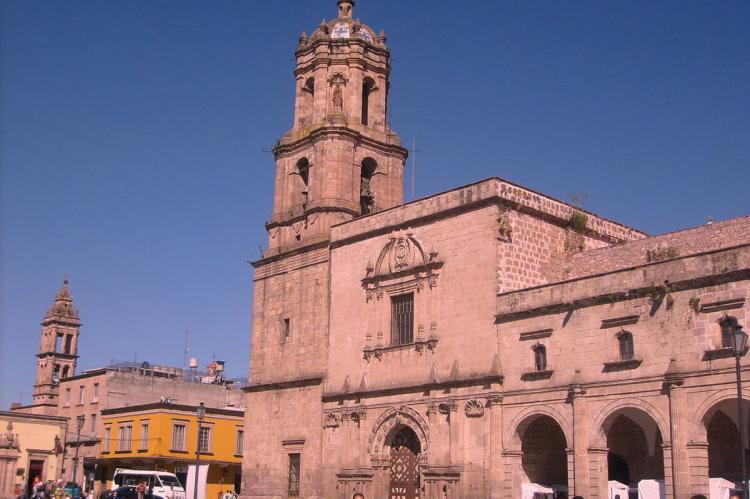Historic Center of Morelia (Mexico)
Built in the 16th century, Morelia is an outstanding example of urban planning that combines the ideas of the Spanish Renaissance with the Mesoamerican experience. More than 200 historic buildings in the region's characteristic pink stone reflect the town's architectural history.
Historic Center of Morelia
Morelia is located in the north-central part of Michoacán in central Mexico, at the foot of the Sierra Madre Occidental and near the agricultural valley of Morelia-Querendaro.
Founded in the 16th century under the name of Valladolid, the city was, at the beginning of the 19th century, one of the leading centers of the country's struggle for independence.
Built according to a checkerboard layout, Morelia is an outstanding example of urban development combining town planning theories of Spain and the Mesoamerican experience. Well-suited to the slopes of the central hill of the valley, its streets follow the original layout.
The city has major axes, numerous urban squares such as the vast rectangular Zocalo Plaza and gardens that create an open, airy ensemble with magnificent vistas of the surrounding hills.
Almost all of Morelia's notable sites lie in its Historic Center. This Historic Center is roughly equivalent to the city's original layout when it was founded in 1541, and most of this layout has survived intact to the present day.
The heart of the Historic Center is the cathedral and its surrounding plazas: the Plaza de Armas (also known as the Plaza de los Mártires), the Juárez Plaza, and the Melchor Ocampo Plaza.
The Plaza is surrounded by portals and colonial-era buildings such as the Banca Promex, the Virrey de Mendoza Hotel, the Juan de Dios Gomez House and the old town hall, also called the Michelena House.
The central part of the Historic Center of Morelia World Heritage site includes 249 monuments of prime importance, of which 21 churches and 20 civil constructions crystallize the city's architectural history.
The sobriety of the urban townscape is enhanced by many Baroque facades characteristic of the religious foundations, including the cathedral and the churches of Santa Rosa, de las Monjas, and Guadelupe.
Although most monuments were erected in the 17th and 18th centuries, styles of earlier and later periods (Middle Ages, Renaissance and Neoclassicism) merge to create the "Baroque Moreliano."
Together, they form a harmonious unity that reinforces the measured use of architectural elements in pink stone, along with the numerous arcades, imposing towers, and cupolas covered with azulejos that dominate the city.





